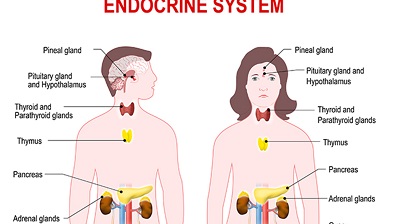
Hormones and neurotransmitters have significant overlap – both are the natural biological tools used for communication, both are often made of proteins, and the optimal function of each is necessary for good health. However, there are important differences and distinctions between neurotransmitters and hormones that we will discuss here. First, let’s start with a comparison of each, their respective characteristics, and their roles in the human body. Here is everything you need to know about hormones vs. neurotransmitters.
What Are Hormones?
Hormones are the body’s chemical messengers. Once created in the various organs and glands that produce them, their role is to travel throughout the body via the blood and signal to their target organs or tissues to perform important work. The human body produces 50 different hormones that make up the endocrine system (hormone system).
Examples of the various hormones found in the human body include:
- Testosterone (the primary sex hormone for men, also found in smaller quantities in women)
- Estrogen (the primary sex hormone for women, also found in smaller quantities in men)
- Human growth hormone (HGH)
- Cortisol (the “stress hormone”)
- Adrenaline
- Thyroid hormones (T3 and T4)
- Luteinizing hormone (LH)
- Follicle-stimulating hormone (FSH)
What Activities Do Hormones Perform in the Human Body?
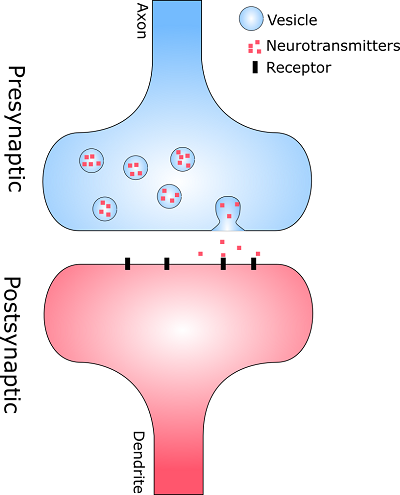
The widely varying tasks that hormones perform include:
- Sexual development and desire (libido)
- Metabolism (energy processing, storage, and use)
- Muscle and bone development
- Body temperature regulation
- Mood
- Sleep-wake cycles (circadian rhythm)
As we will explore later, neurotransmitters rather than hormones are actually responsible for directing much of the activity in the human brain and the overall nervous system. However, hormones do play an important role in brain health and preserving optimal brain function alongside neurotransmitters as well.
The clinical evidence demonstrates three particular ways that the sex hormones, in particular – estrogen and progesterone in women and testosterone in men – may impact mental health as well as physical health.
Can Hormones Also Act as Neurotransmitters?
Some peptide hormones – relatively small, simple amino acid chains compared to more complex protein hormones – may act, depending on the context, as hormones or as neurotransmitters:
“For example, vasopressin and oxytocin, two peptide hormones that are released into the circulation from the posterior pituitary, also function as neurotransmitters at a number of central synapses. A number of other peptides also serve as both hormones and neurotransmitters.”
So, what exactly are neurotransmitters and how do they differ from hormones?
What Are Neurotransmitters?
In terms of physiological function, neurotransmitters are generally similar to hormones; they each regulate important activities in the body as their primary activity via chemical signaling and, often, they are likewise made of proteins and amino acids.
One of the handful of key differences, though, is that neurotransmitters work only within the nervous system whereas hormones travel throughout the entire body through the blood vessels. Rather than being produced in an organ or gland and released into the bloodstream, neurotransmitters are instead produced endogenously – “endo” meaning “inside” – in individual neurons and then released via the presynaptic terminal into the postsynaptic terminal.
The process of sending neurotransmitters via the presynaptic neuron (the “sender”) and the postsynaptic neuron (the “receiver”) is known as neurotransmission. Neurotransmission is the central way that neurons pass along critical information to one another to regulate their activity and, in healthy people, to maintain optimal brain function. The area between the synapses is known as the synaptic cleft. Once the postsynaptic neuron receives the message, it then modifies its electrical signaling accordingly, This interaction between chemical messages and electrical activity is termed “electrochemical.”
 It is estimated that, of the 85 billion neurons in the brain and wider nervous system, these cells send 5-50 messages per second. This nearly instantaneous communication system is necessary to keep you alive. Let’s find out how below.
It is estimated that, of the 85 billion neurons in the brain and wider nervous system, these cells send 5-50 messages per second. This nearly instantaneous communication system is necessary to keep you alive. Let’s find out how below.
What Activities Do Neurotransmitters Perform?
As we have explored, the major function of neurotransmitters is to transmit information between brain cells (neurons) to regulate brain and nervous system activity. The basic process of passing information via neurotransmission follows:
- The action potential is created. In the context of neurotransmission, an action potential occurs when the membrane (the outer coating) of the neuron temporarily changes its electrical charge from negative to positive via shifting ions. This is the first step in the process. This ion shift “primes” the neuron for neurotransmission as it moves out of the resting state.
- Through an “electrochemical cascade,” the electrical signaling via ions travel to the axon, the interface with other neurons.
- At the end of the axon terminal are vesicles that house the chemical neurotransmitters, waiting for the appropriate electrical signal to be released into the synaptic cleft, the space between neurons.
- The appropriate neurotransmitters are then released through the axon terminal into the synapse, where they are absorbed by the next cell and this step of cell-to-cell neurochemical signaling is complete.
It’s important to note that, despite long-held beliefs that neurons alone can release neurotransmitters, scientists now understand that glial cells – the “helper” cells located in between neurons that maintain them – also produce neurotransmitters such as glutamate that contribute to neural plasticity (more on the importance of plasticity to anti-aging brain health later on).
So, that is how neurotransmitters work, but to what end? The purposes of neurotransmitter activity are several-fold and include the regulation and facilitation of:
- Learning
- Motor function
- Memory
- Attention
- The stress response
- Emotions
- Alertness
- Arousal
- Hunger
- Sleep
The Various Classifications of Neurotransmitters
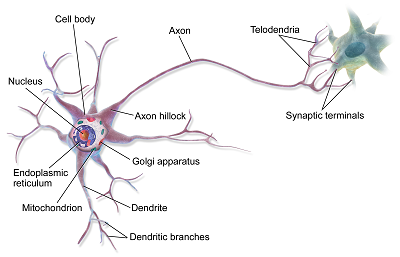 Physiologists generally break neurotransmitters down into three distinct classes. They are:
Physiologists generally break neurotransmitters down into three distinct classes. They are:
- Acetylcholine. This was the first lab-identified neurotransmitter, discovered by a German physicist named Otto Loewi in 1921. It is the primary parasympathetic neurotransmitter, meaning it is largely responsible for sexual arousal, digestion, defecation, and urination, as well as being implicated in the “fight-or-flight” response.
- Biogenic Amines. This class of neurotransmitters includes epinephrine, norepinephrine, and dopamine. They are largely responsible for regulating emotions as well as the circadian rhythm (the sleep-wake cycle of the “biological clock”)
- Amino acids. Even non-biologists are likely familiar with the term “amino acids” – small proteins that serve as the essential “building blocks” of cellular machinery. Amino acids play several roles in human health, including acting as neurotransmitters as in the case of glutamate and gamma-aminobutyric acid (GABA).
What Is the Difference Between Excitatory and Inhibitory Neurotransmitters?
Neurotransmitters affect the activity of the neurons that they interact with in different ways. The three main types of influence that they exert over neurons include:
- Excitatory. As the name suggests, excitatory neurotransmitters trigger the action potential previously discussed. In other words, they spur the neuron into activity to create an electrochemical cascade. Glutamate is the main excitatory neurotransmitter.
To achieve this, neurotransmitters cause neurons to build up positively charged ions like Na+.
- Inhibitory. These neurotransmitters serve as the counterbalance to excitatory neurotransmitters by preventing the action potential. One of the most important inhibitory neurotransmitters is GABA, responsible for calming down the nervous system and slowing things down. Both inhibitory and excitatory neurons, as opposed to neuromodulators, act in the synaptic cleft.
- Modulatory. These neurotransmitters act on entire populations of neurons and are not restricted to cell-on-cell action in the synaptic cleft. Researchers have just begun to uncover the critical role that such modulatory neurotransmitters play in regulating nervous system health and preventing neurodegenerative decline as seen in Parkinson’s and Alzheimer’s diseases, among others.
Often – as in the case of acetylcholine and dopamine – neurotransmitters can either exert excitatory or inhibitory effects, depending on the receptors in the receiver cell.
Important Neurotransmitters for Brain Health
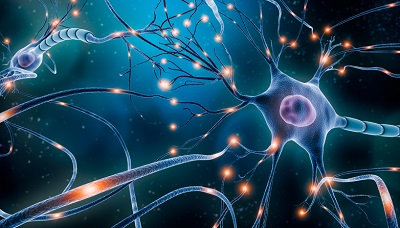 Examples of neurotransmitters critical for good brain health include:
Examples of neurotransmitters critical for good brain health include:
- Serotonin
- Dopamine
- Acetylcholine (Ach)
- Gamma-Aminobutyric Acid (GABA)
- Epinephrine
- Norepinephrine
- Nitrogen Oxide
- Adrenaline
- Noradrenaline
- Histamine
The Key Differences Between Hormones and Neurotransmitters
So far, we’ve explored the respective production, structures, and functions of hormones and neurotransmitters. While strikingly similar in some respects, they are also different in important ways. In the chart below, we’ve broken down these differences.
| Neurotransmitters vs. Hormones: the Essential Differences | ||
| Neurotransmitters | Hormones | |
| System | Components of the nervous system | Components of the endocrine system |
| Occurrence in nature | Only found in animals | Found in plants and animals |
| Method of transmission | Through synaptic clefts between neurons | Secreted into and passed through the bloodstream |
| Location of action | Between nerve cells only | Activities throughout the body on various organs and tissues |
| Timeliness of activity | Instantaneous action (measured in milliseconds) | May take hours or days to produce the effect |
| Primary purpose | Regulation of nerve cell activity | Controlling multiple biological functions including tissue growth, sexual health, etc. |
| Target of activity | Postsynaptic neurons (“receiver” cells) | Various organs and tissues |
| Location of production | Inside nerve cells | In multiple glands |
| Structural makeup | Amino acids, gases, proteins | Steroids, phenolic compounds, amines, terpenoids, polypeptides |
| Examples | Glutamate, GABA, epinephrine, serotonin, dopamine | Testosterone, estrogen, human growth hormone (HGH) |
How Do Hormones and Neurotransmitters Interact?
So, we’ve dissected the crucial distinctions between hormones and neurotransmitters in terms of their respective origins, structures, and functions. But how do these two types of chemical messengers interact?
While neurotransmitters primarily facilitate communication between brain cells, the brain also has multiple receptor sites where hormones bind to convey important messages as the interface between the brain and the other vital organ systems.
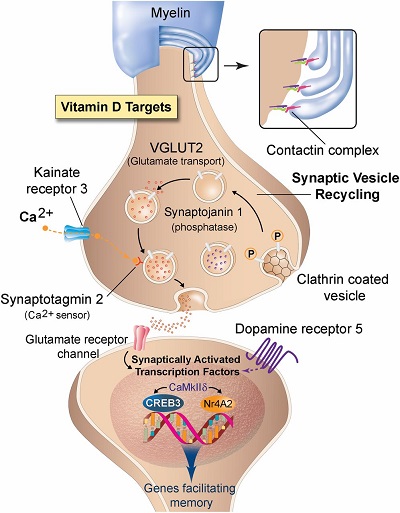
Examples of hormones that act on the brain, and therefore affect neurotransmitter activity, include:
- Human growth hormone (HGH)
- Sex hormones (testosterone and estrogen)
- Insulin-like growth factor 1 (IGF-1)
- Thyroid hormones
- Glucocorticoids
- Vitamin D
Vitamin D and Neurotransmitters
Many people might not realize that vitamin D actually acts as a steroid hormone in the body. More to the point for this exploration of the neurotransmitter-hormone connection, a significant volume of research has been performed “showing the effect of vitamin D on both widespread neurotransmitter changes (glutamine/noradrenaline) and regionally selective neurotransmitter changes (dopamine/serotonin)” with heavy implications for protecting brain health by improving neurotransmitter activity.
The takeaway on vitamin D (again, a hormone) and neurotransmitter health is as follows:
“Due to its effect on dopamine pathway in the brain, vitamin D can be a useful therapeutic agent used as an intervention therapy to be combined with existing treatments for Parkinson’s disease.”
Unfortunately, the data indicates that as much as 42% of the US adult population is deficient in vitamin D – a major risk factor for neurotransmitter and brain health that must be addressed.
Sex Hormones and Neurotransmitters
The sex hormones – estrogen and testosterone – interface with the neurotransmitter system in the brain. In optimal amounts, they support healthy neurotransmitter production.
For example, estrogen increases the expression of brain-derived neurotrophic factor (BDNF), a potent molecule that protects existing neurons and stimulates the production of new neurons (and more connections between them in the case of neural plasticity).
Estrogen, the main female sex hormone, supports healthy BDNF expression:
“Estrogen treatment seems to increase BDNF expression in several brain regions including hippocampus, amygdala and cortex, and has been shown to decrease the risk for neurodegenerative diseases such as Parkinson’s disease and Alzheimer’s disease.”
This is important to note because “BDNF has been shown to play a key role in neuronal survival, in promoting neuronal regeneration following injury and regulating [the] neurotransmitter system.”
Testosterone, the main male sex hormone (known as an “androgen”), likewise supports optimal neurotransmitter function:
“Androgen signaling increases neural transmission, neurotransmitter release, motoneuron cell body and dendrite size, and regrowth of damaged peripheral nerves.”
Aging men and women are each at risk of developing sex hormone deficiencies that can impair cognitive function, trigger mood disorders and other mental health conditions, and predispose them to the development of neurodegenerative disease. The good news is that hormone replacement therapy (HRT) to replace falling levels of these sex hormones is safe, effective, and, increasingly, affordable even to those patients on modest incomes.
Human Growth Hormone (HGH) and Neurotransmitters
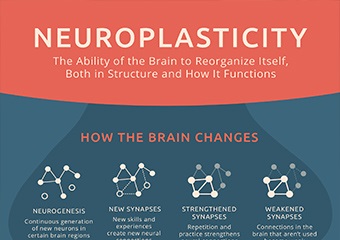 The relationship between hormones and neurotransmitters also works in the inverse way: low neurotransmitter levels can negatively impact some hormone levels. For example, the neurotransmitter dopamine is known to regulate growth hormone secretion by the pituitary gland in the brain. Human growth hormone (HGH) is critical for healthy bone and muscle development, preserving cognitive function, and optimal metabolism.
The relationship between hormones and neurotransmitters also works in the inverse way: low neurotransmitter levels can negatively impact some hormone levels. For example, the neurotransmitter dopamine is known to regulate growth hormone secretion by the pituitary gland in the brain. Human growth hormone (HGH) is critical for healthy bone and muscle development, preserving cognitive function, and optimal metabolism.
Low dopamine levels have been correlated to growth hormone deficiencies, leading to the conclusion that adding a dopaminergic (dopamine-increasing) agent to conventional HGH replacement therapy for patients with deficiencies can improve outcomes in some cases.
The Bottom Line: Do Hormones and Neurotransmitters Affect One Another?
Yes. Hormones (belonging to the endocrine system) and neurotransmitters (belonging to the nervous system) affect each other in a complex interplay. Good hormonal health supports optimal neurotransmitter function and vice versa. Conversely, disruptions to endocrine system function can negatively impact nervous neurotransmitter function and vice versa.
“Sex hormones have been implicated in neurite outgrowth, synaptogenesis, dendritic branching, myelination and other important mechanisms of neural plasticity.”
The concept of “neuroplasticity” refers to the nervous system’s ability to adapt and change to new circumstances by modulating the communication that occurs between cells.
The Critical Importance of Neuroplasticity for Anti-Aging
Neuroplasticity is a prerequisite for learning new skills, for coping with adverse and novel events, and for recovering from trauma as the mind plots out new pathways through which to process information. Protecting and spurring these changes over time is an essential component of any anti-aging strategy for long-term mental health. The connection between the sex hormones and neuroplasticity explains why men with age-related testosterone deficiencies and women with estrogen deficiencies (often occurring during pre-menopause and menopause) can have devastating effects on mental health and may put individuals who experience these conditions at greater risk of neurodegenerative disease.
When considering the anti-aging benefits of hormone replacement therapy (HRT), doctors and patients should also pay attention to the interplay between hormones and neurotransmitters as such considerations can inform the best course of anti-aging treatment to optimize hormone levels with the ultimate goal of preserving long-term brain health.

